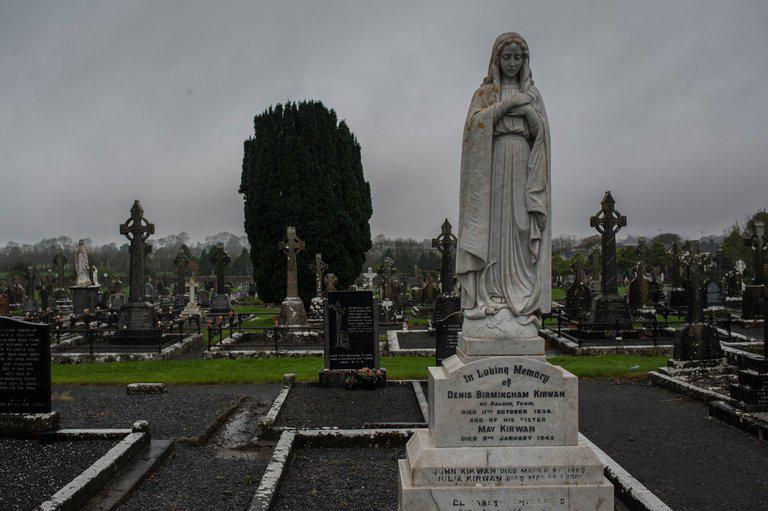|
Opinion Letters: In Ireland, Recalling ‘a Very Dark Time’
The New York Times
To the Editor: Re “The Lost Children of Tuam,” by Dan Barry (Special Report, Oct. 29): I grew up in the long shadow of one of Ireland’s most notorious institutions for boys, St. Conleth’s industrial school in County Offaly. The school’s reputation for harsh treatment was such that we were often threatened with being sent to St. Conleth’s if we didn’t behave. The Irish writer John McGahern, himself a victim of the tyrannical Irish version of the Catholic Church, once said: “The true history of the thirties, forties and fifties in this country has yet to be written. When it does, I believe it will be shown to have been a very dark time indeed, in which an insular church colluded with an insecure state to bring about a society that was often bigoted, intolerant, cowardly, philistine and spiritually crippled.” Your report on St. Mary’s Mother and Baby Home in Tuam, County Galway, has borne out Mr. McGahern’s prescience. Dan Barry follows a long line of reporters and activists who in the late 1970s succeeded in forcing the Irish government to investigate the conditions of its more than 70 industrial schools, its orphanages and its Magdalene Laundries for “fallen women,” who took care of church linens, among other things. The courage of reporters like Mr. Barry shines a bright light on how dark the dark times mentioned by Mr. McGahern really were. TOM PHELAN, FREEPORT, N.Y. The writer’s novel “Nailer” is set against the backdrop of Ireland’s abusive industrial schools and the church-state collusion that allowed them to flourish. To the Editor: In the 1950s, I was a teenager living in a middle-class suburb of Dublin. Though contraception was unavailable, neither I nor any of my fun-loving girlfriends became pregnant. Not because we had taken a vow of chastity but because we were terrified of the known and oft-threatened consequences of pregnancy: social ostracism and commitment to one of the church-run convents for unwed mothers and their offspring, which were known to be harsh and prisonlike. Recalling the fear and repression of those times, I would guess that many girls and women who wound up in those hideous convents were there as a result of abuse. SADHBH NEILAN, PORTLAND, ME. To the Editor: The Irish government has established a Commission of Investigation into mother and baby homes. But this body is immune from requests for personal data. Its underpinning legislation prevents the publication of evidence given to it in private. It has held no public hearings. Its inquiry is limited to only a fraction of the institutions that abused and forcibly separated unmarried mothers and their children in 20th-century Ireland. And it has yet to reach out to the more than 2,000 Irish babies forcibly adopted from Ireland to the United States after 1947. The Clann Project provides assistance to those affected to make their voices heard. It is time the Irish government made a proper commitment to truth-telling and to ending this continuing injustice.
JAMES M. SMITH The writer is a member of Justice for Magdalenes Research, an advocacy group that provides information and support to the women who spent time in the Magdalene Laundries and their families. The letter was also signed by the four other members of the group. To the Editor: I grew up in Ireland and attended an all-girls Catholic school. There were two emphatic rules. One, “don’t bring a bastard into this house,” usually uttered as soon as menstruation began, the warning repeated over and over. The second, imposed not by church or state, but self-imposed by pre- and post-pubescent girls: Don’t get caught in the school corridor alone with Father so and so. I was living in Boston in the late 1950s and 60s, married and delivering my first of three daughters in a Catholic hospital in Dorchester run by nuns who also ran an adjacent home for unwed mothers. Those “wayward” pregnant girls reportedly did not receive any pain medication in the labor or delivery rooms, to “teach them a lesson.” A redeeming feature of your wonderful reporting is that the church has lost its grim grip on the Irish.
ESTELLE SHANLEY To the Editor: As a pediatrician, I reflected on how the children of Tuam died of diseases that are preventable today by proper housing standards, good hygiene and childhood immunizations. But I also wondered how far we have come in protecting children by preventing adverse events before they occur. In Tuam, Ireland, there was silence, contempt for “disgraced women,” and lack of a social welfare system to protect neglected and abused children. While American life, values, science and social welfare have come a long way, consideration and compassion for the disenfranchised, especially children, have been mired in political rhetoric. There is still a whole generation of children living in poverty without a cohesive national will to protect them and lift them up. I pray that we are not creating our own Tuam. DANIEL LEVY, COLUMBIA, MD.
|
.
Any original material on these pages is copyright © BishopAccountability.org 2004. Reproduce freely with attribution.
